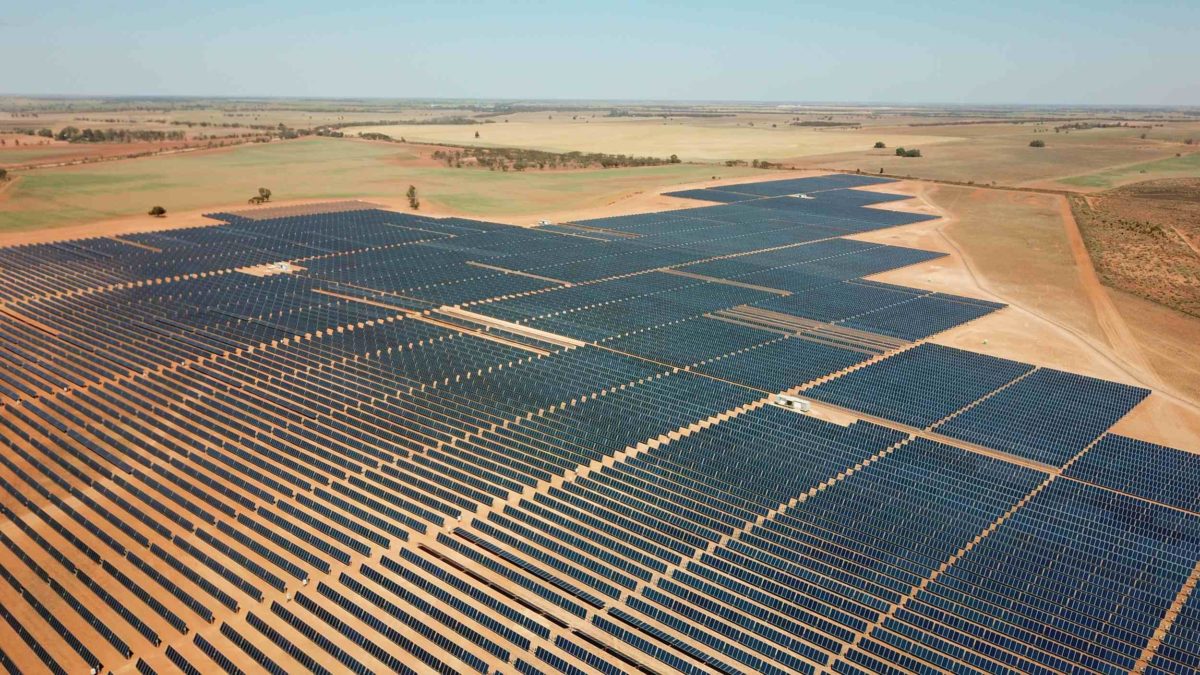New planning guidelines are now in place for large scale solar development in Victoria in a bid to provide certainty and confidence to the sector and encourage greater investment. The guidelines are an attempt to ensure solar farms are built in appropriate locations in terms of network strength and delivered with the least possible environmental and social impacts.
Following a nine-month development process including consultation with communities, councils and industry and a review of best-practice standards interstate and internationally, the guidelines were released in July. They were locked in on Tuesday after the Minister for Planning, Richard Wynne, introduced an amendment to all Victorian planning schemes.
The Solar Energy Facilities – Design and Development Guideline attempts to ensure new solar energy facilities of 1 MW or more are built in the right locations, meaning they are easily accessible to the electricity transmission network; they avoid or minimise impacts on their local environments; and that issues such as impacts on productive agricultural areas, irrigated areas and areas of environmental importance are considered.
The location of solar farms on the grid will be increasingly important as Victoria continues to move towards its 50% renewables goal by 2030. This was highlighted by the last week’s major curtailment event when the Australian Energy Market Operator (AEMO) constrained the output of five large-scale solar generators, four of which are located in Victoria, by 50% citing system strength issues.
The new set of guidelines also includes a range of best-practice approaches to help developers engage with communities and ensure the least possible environmental and social impacts of their proposals. “We’ve listened to the community and included a best practice approach to consultation, ensuring people can have their say from an early stage, well before a planning permit is lodged,” Minister for Planning Richard Wynne said. “The Guidelines brings a consistent approach to assessing the appropriateness of solar developments, giving the renewable energy industry more confidence to invest.”
Finally, the amendment also brings permit assessment for solar facilities in line with large scale wind farms, where the Minister for Planning is the responsible authority. Previously, solar farm approval was down to local governments, which often raised concerns about a lack of guidance from the state government for an assessment of PV projects. As a result, increasing number of permit applications were called in by the state planning minister or forwarded to the Victorian Civil and Administrative Tribunal (VCAT) amid opposition from local community.
“This consolidated approach will reduce the administrative burden on councils and provide consistent decision making across the state,” the government said in a statement on Tuesday.
This content is protected by copyright and may not be reused. If you want to cooperate with us and would like to reuse some of our content, please contact: editors@pv-magazine.com.









1 comment
By submitting this form you agree to pv magazine using your data for the purposes of publishing your comment.
Your personal data will only be disclosed or otherwise transmitted to third parties for the purposes of spam filtering or if this is necessary for technical maintenance of the website. Any other transfer to third parties will not take place unless this is justified on the basis of applicable data protection regulations or if pv magazine is legally obliged to do so.
You may revoke this consent at any time with effect for the future, in which case your personal data will be deleted immediately. Otherwise, your data will be deleted if pv magazine has processed your request or the purpose of data storage is fulfilled.
Further information on data privacy can be found in our Data Protection Policy.